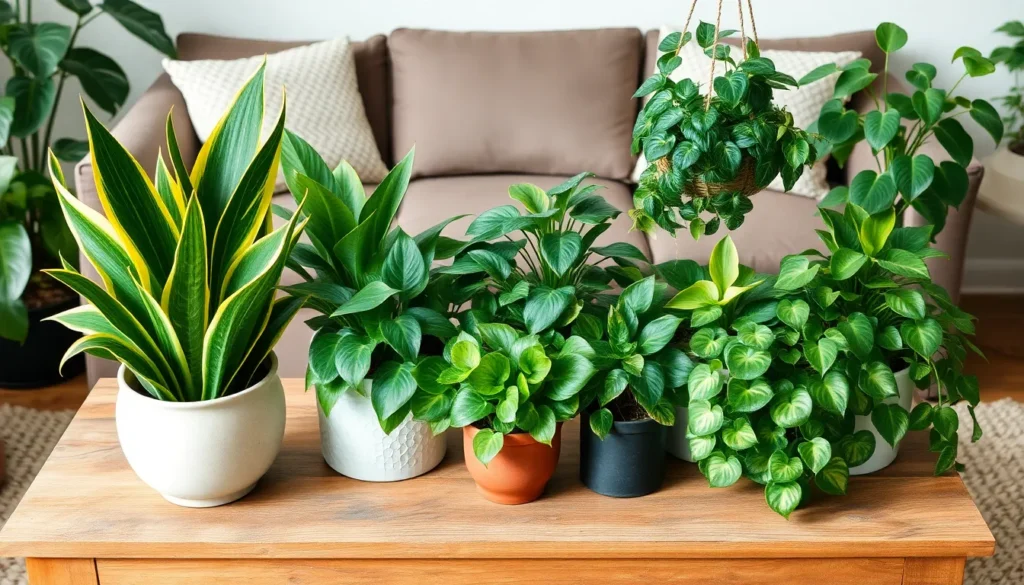Welcoming a houseplant into your home is like inviting a new friend to stay, one that brings a breath of fresh air and a vibrant splash of green. For those just dipping their toes into the world of gardening, houseplants offer the perfect opportunity to grow your confidence alongside your plants. Whether you’re a beginner with a budding curiosity or a seasoned gardener looking to expand your indoor collection, understanding which plants to start with can make all the difference in nurturing your green thumb.
Houseplants have a magical way of transforming spaces, purifying air, and even boosting our mood—an essential trio for busy lives. This article will guide you through selecting the right plants for beginners, focusing on those that are forgiving and easy to care for. You’ll discover how to match plants to your living environment, learn practical tips for care, and even find out how to troubleshoot common issues. With these insights, you’ll be well on your way to creating a thriving indoor oasis that suits your lifestyle and experience level.
It’s exciting to embark on this journey, and there’s no better time to start than now. Together, we’ll explore how to choose plants that fit seamlessly into your daily routine, ensuring they thrive with minimal effort. By the end of this article, you’ll not only have a list of ideal starter plants but also the confidence and knowledge to nurture them. So, let’s dig in and cultivate a deeper connection with nature, right from the comfort of your home.
Choosing Beginner-Friendly Houseplants
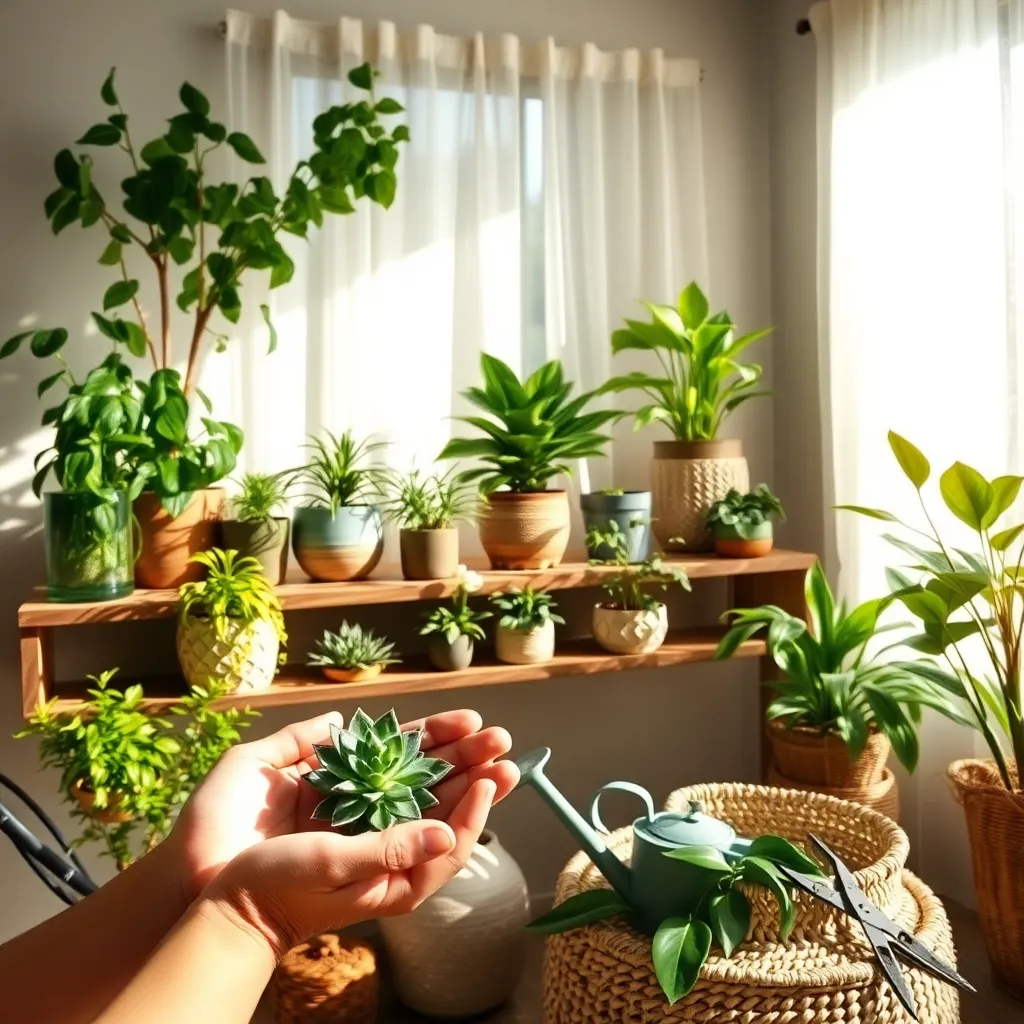
When starting your houseplant journey, consider choosing plants that are known for their resilience and ease of care. Snake Plant (Sansevieria) is a top pick for beginners due to its ability to thrive in various lighting conditions and its low watering needs.
Another excellent option is the Pothos (Epipremnum aureum), which can grow in low light and requires infrequent watering. Simply water the plant when the top inch of soil feels dry, and watch it flourish with minimal effort.
For those looking for a blooming plant, Peace Lily (Spathiphyllum) offers beautiful white flowers and purifies the air as a bonus. It prefers indirect light and should be watered when the soil is dry to the touch, making it both low-maintenance and rewarding.
Consider using a well-draining potting mix, such as one made for cacti and succulents, to prevent overwatering issues. Adding perlite or sand can improve drainage and aeration, helping your plants stay healthy and vibrant.
Understanding Light and Placement

Light is one of the most crucial factors for the success of your houseplants. Understanding the light requirements of different plants will help you place them in the most suitable spot in your home.
Most houseplants prefer bright, indirect light, which means they thrive near windows but away from direct sunlight. Direct sunlight can scorch the leaves of tender plants, so it’s essential to know which plants can handle it.
South-facing windows provide the most intense light, which is perfect for sun-loving plants like succulents and cacti. Conversely, north-facing windows receive the least light, making them ideal for low-light plants such as pothos and snake plants.
For beginners, it can be helpful to move plants around and observe their growth to find the optimal placement. If your plant’s leaves turn yellow or drop, it might be a sign of inadequate light, prompting a change in location.
Advanced tip: Utilize sheer curtains to diffuse harsh sunlight for plants that prefer indirect light. This simple adjustment can create the ideal environment for a wider variety of houseplants.
Remember that light conditions can change with the seasons, so occasionally reassess your plant’s placement. This ongoing attention will ensure your plants continue to thrive throughout the year.
Simple Watering Tips for Success
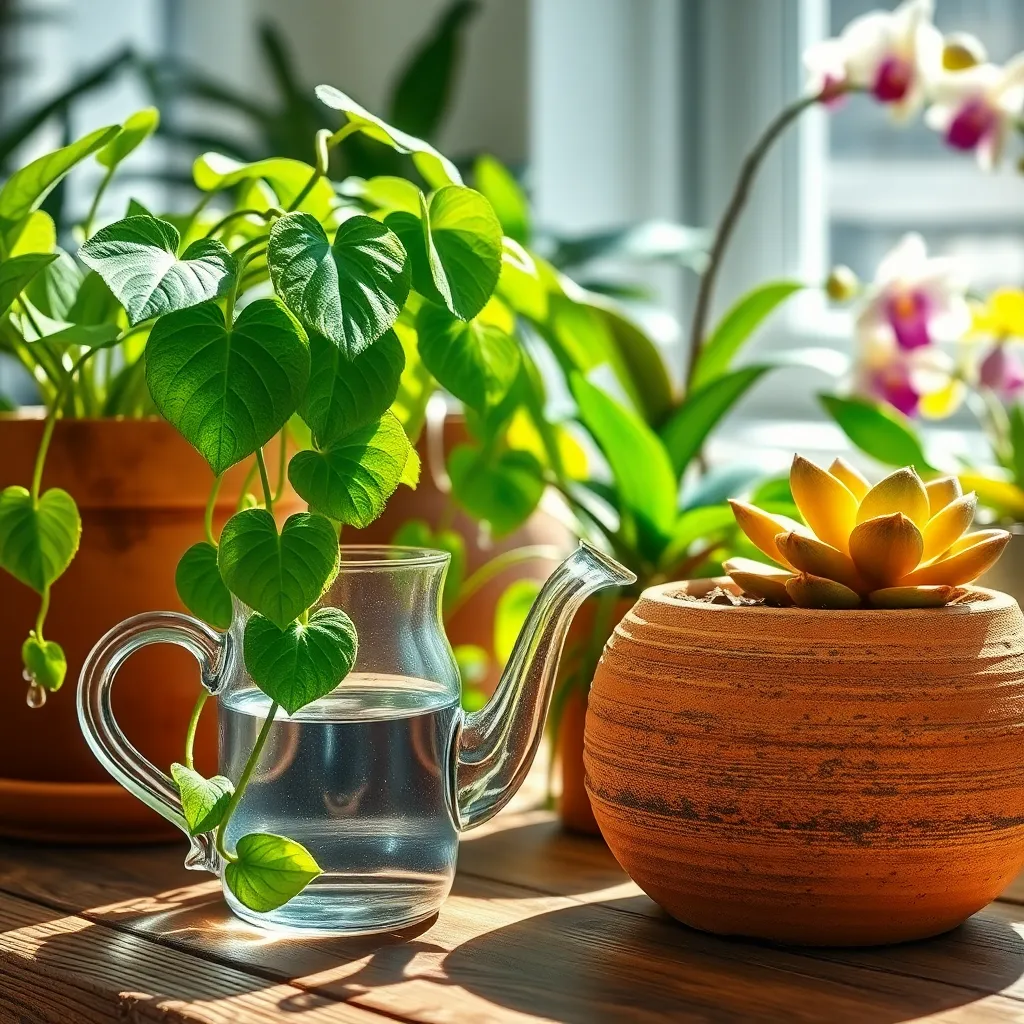
Watering is crucial for houseplant health, but it’s essential to strike a balance between overwatering and underwatering. Most houseplants prefer their soil to dry out slightly between waterings. To determine when to water, insert your finger about an inch into the soil. If it feels dry at that depth, it’s time to water your plant.
Using the right type of water can make a significant difference in plant health. Rainwater or distilled water is often best, as tap water can sometimes contain chemicals that harm sensitive plants. For those who want to go the extra mile, consider using a moisture meter. This tool can help you accurately gauge soil moisture levels and prevent common watering mistakes.
Adjust your watering schedule based on the season and your plant’s environment. During the winter months, many houseplants enter a dormant phase and require less frequent watering. Conversely, in the warmer months, increased sunlight and temperature can cause soil to dry out more quickly. If your plants are in a particularly warm room or near a draft, they might need more frequent attention.
It’s beneficial to water your plants in the morning. This allows excess moisture to evaporate during the day, reducing the risk of fungal diseases. Moreover, always ensure that pots have drainage holes to prevent water from accumulating at the bottom. If you’re using decorative pots without drainage, consider placing a layer of pebbles at the bottom to help excess water escape.
Fertilizing Basics for Novices
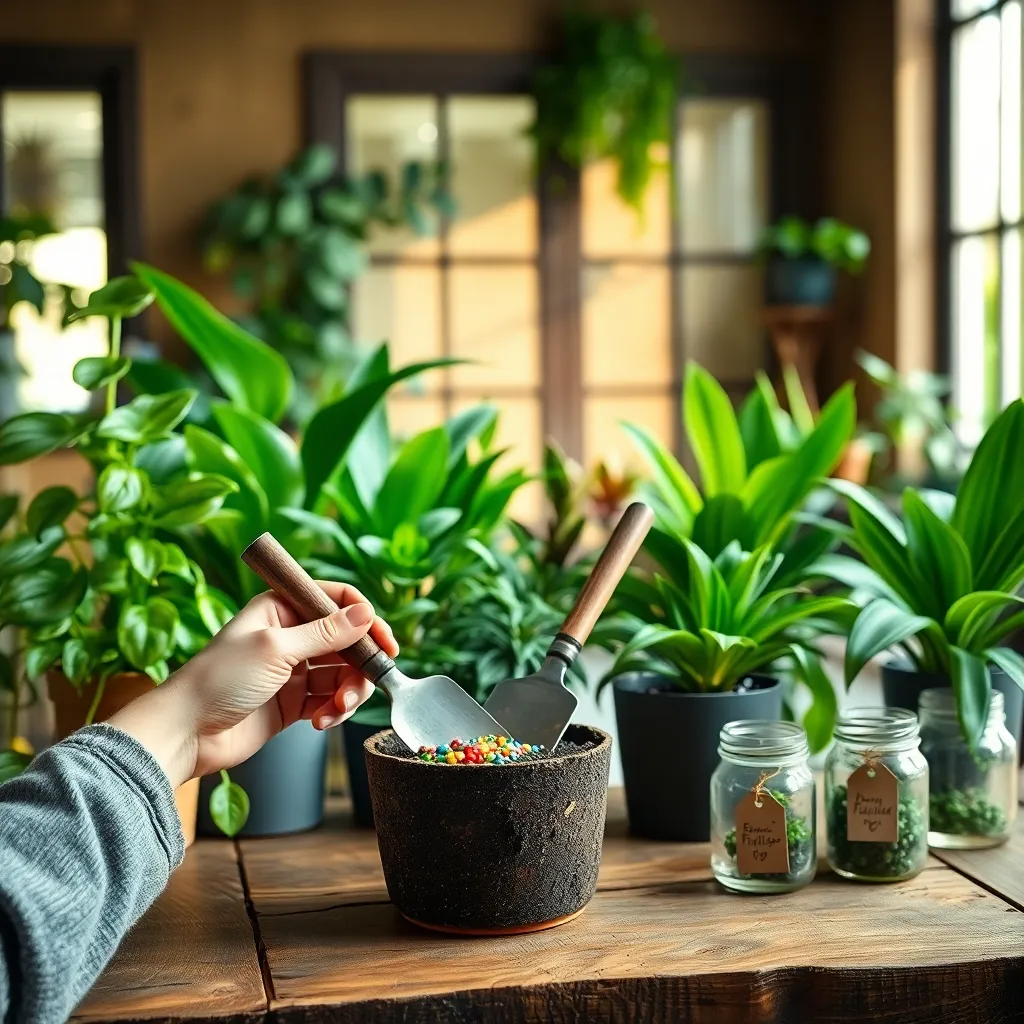
Fertilizing is a crucial part of keeping your houseplants healthy and thriving. Start by understanding that different plants have different nutritional needs, so a one-size-fits-all approach won’t work.
Begin by choosing a balanced, water-soluble fertilizer with an equal ratio of nitrogen, phosphorus, and potassium, such as a 10-10-10 or 20-20-20 formula. This type of fertilizer provides the essential nutrients most houseplants need for overall health and growth.
Apply the fertilizer every four to six weeks during the growing season, typically from spring to early fall. Be careful not to over-fertilize, as this can lead to nutrient burn and damage your plants.
For more advanced care, consider using a slow-release fertilizer that gradually provides nutrients over time, reducing the frequency of applications. This is particularly useful if you tend to forget regular fertilization or if you’re away frequently.
Some plants, like succulents and cacti, require less frequent fertilization due to their slower growth rates. In these cases, fertilizing once or twice a year during their active growing period is usually sufficient.
Always make sure to water your plants before applying fertilizer to avoid root burn and ensure better absorption. If you’re uncertain about how much to use, err on the side of caution and apply less than the recommended amount.
Recognizing Common Plant Issues
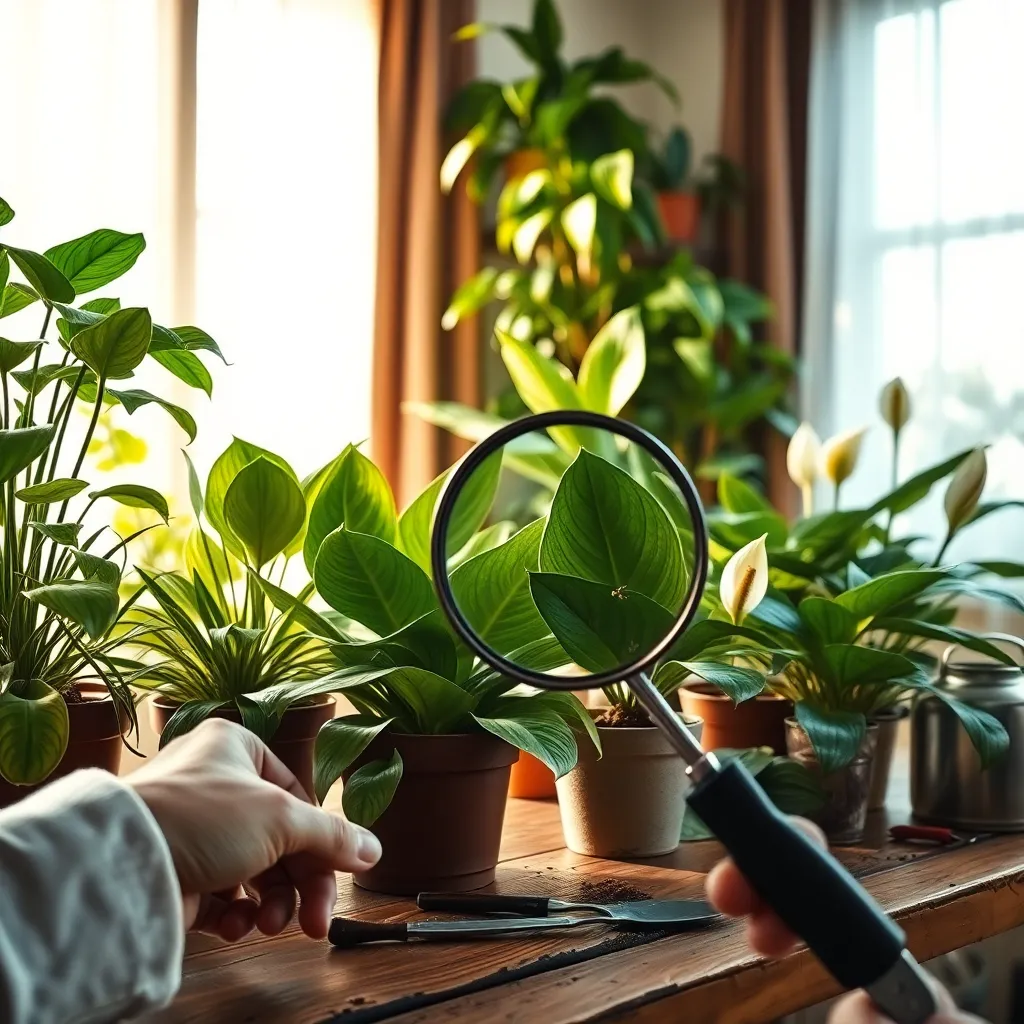
Identifying common plant issues early can save your houseplants from decline. Look for signs such as yellowing leaves, which often indicate overwatering, or brown tips, which may suggest a lack of humidity or too much direct sunlight.
Pay attention to changes in leaf color and texture, as these can be early indicators of problems. For example, if leaves are soft and drooping, it might be a sign of root rot, which occurs when soil is consistently too wet.
Consider the light conditions in your home, as insufficient light is a frequent cause of poor plant health. Move your plants closer to a window or supplement with grow lights if they are not thriving in their current location.
To prevent pest infestations, regularly inspect your plants for small insects like spider mites or aphids. Wipe leaves with a damp cloth or use a mild insecticidal soap to manage any outbreaks.
Advanced gardeners can use a moisture meter to precisely monitor soil moisture and adjust watering schedules accordingly. This tool helps prevent both over- and under-watering, which are common pitfalls for beginners.
Conclusion: Growing Success with These Plants
In nurturing houseplants, beginner gardeners can also cultivate key relationship concepts that enrich their personal connections. First, just as plants need consistent care, relationships thrive on regular attention and communication. Second, understanding the unique needs of each plant mirrors the importance of recognizing and valuing individual differences in partnerships. Third, patience is vital; both plants and relationships require time to grow and flourish. Fourth, fostering a supportive environment for plants encourages mindfulness of creating a nurturing space in relationships. Lastly, learning from mistakes and adjusting care strategies is akin to resolving conflicts constructively.
To harness these insights, take a moment today to assess which relationship aspect might benefit from a touch more care or attention. Whether it’s a heartfelt conversation or a small act of kindness, every effort counts. To keep these valuable tips at your fingertips, be sure to bookmark this article. As you continue to nurture both your plants and relationships, remember that growth and success are ongoing journeys. By prioritizing these nurturing practices, you are laying a strong foundation for blossoming relationships that can withstand the test of time. Embrace this journey with confidence and watch your connections thrive.

